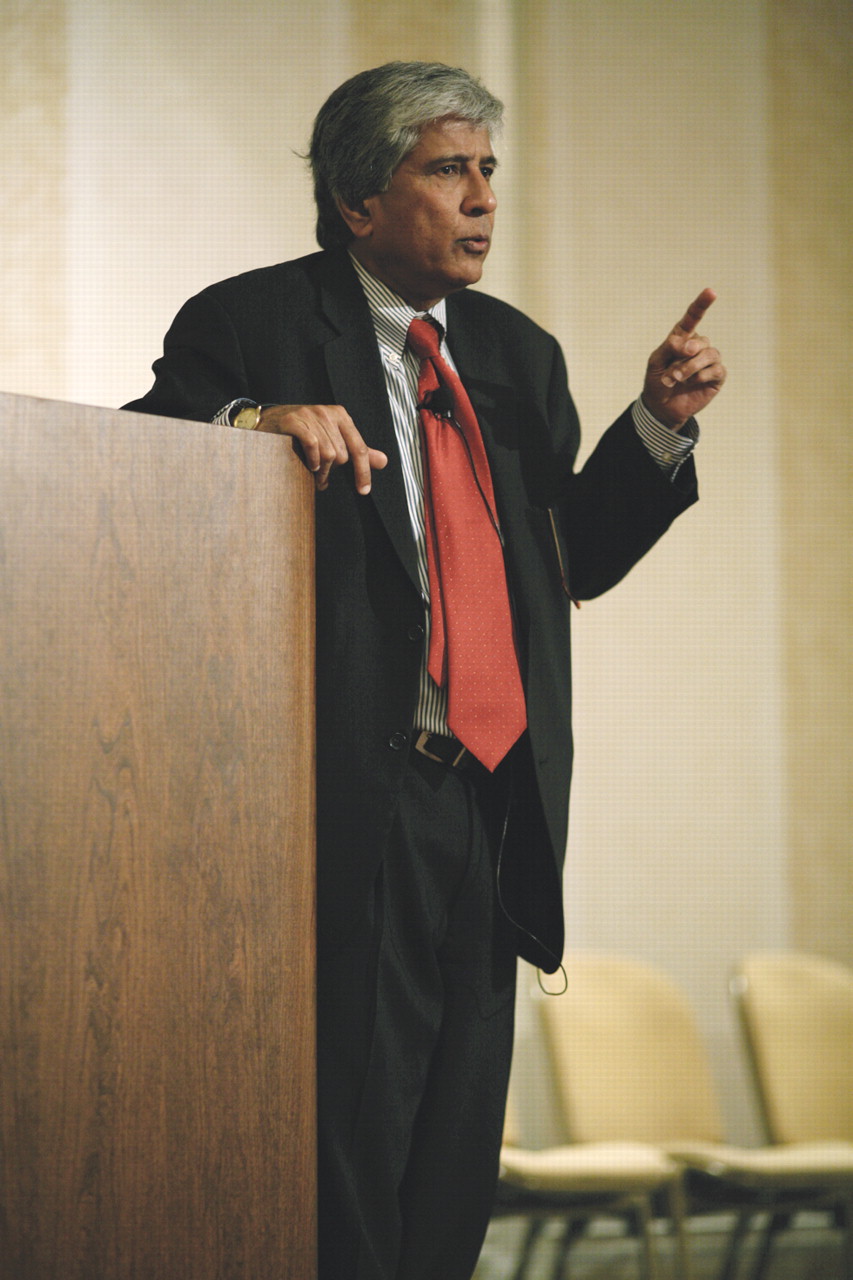It Takes More Than Training To Become a Psychotherapist
No residency program can fully prepare a trainee in four years to practice psychotherapy, but it can lay down a bridge the new practitioner may traverse—with years of study, supervision, and clinical practice—from hesitancy and doubt to firm conviction about the efficacy of the “talking cure.”

Salman Akhtar, M.D.: As psychiatry residents master psychotherapy, they“ have to live for a long time on borrowed faith. Gradually, from hesitation through borrowed faith, the resident will come to the doorstep of conviction.”
Courtesy of AADPRT
That was the message psychiatrist and psychoanalyst Salman Akhtar, M.D., brought to training directors at this year's annual meeting of the American Association of Directors of Psychiatric Residency Training (AADPRT) in San Diego.
Akhtar is a professor of psychiatry at Jefferson Medical College and training and supervising analyst at the Psychoanalytic Center of Philadelphia. He is the author of numerous articles and papers about psychotherapy and psychoanalysis, as well as six volumes of poetry. His most recent book is Freud Along the Ganges: Psychoanalytic Reflections on the People and Culture of India (Other Press Books, New York, 2005).
At a time when training programs are required by accrediting bodies to have their residents demonstrate “competency” in psychotherapy, Akhtar's message was a bracing one about the difficulty of transmitting the art and science of a special kind of listening and speaking: not everyone can be a psychotherapist, he said, and even those residents who do demonstrate promise may not become confident practitioners until many years after residency.
In an address titled “From Hesitant Conjecture Through Borrowed Faith to Firm Conviction,” Akhtar told training directors that he was practicing for nearly 14 years after residency before he began to feel a sense of firm conviction about his skills as a therapist and the ability to alleviate symptoms through listening and talking.
“No residency program, even one that is heavily invested in psychotherapy, can prepare a resident in four years to be a psychotherapist,” he said. “There should be no fear or shame about this. We can teach them how to become therapists, but we cannot make them therapists when they graduate.”
With trademark good humor and illuminating anecdotes and examples from his own clinical practice and supervision of trainees, Akhtar described a process whereby novice therapists move from “hesitancy” to“ conviction.” In making that transition, they have to rely on what he called a “borrowed faith” in the efficacy of psychotherapy handed down by institutions and individuals committed to passing on its art and science.
It is this “borrowed faith” that a training program can impart to its residents. Akhtar outlined nine educational experiences from which trainees may borrow a faith to last them through their period of hesitancy:
Being exposed to faculty members who believe in and practice psychotherapy. | |||||
Reading psychotherapy books and papers, especially those in which cases are described and symptoms are resolved using psychotherapy. | |||||
Reading studies in the peer-reviewed literature that demonstrate the efficacy of psychotherapy. | |||||
Seeing faculty members conduct psychodynamic interviews at an initial evaluation. | |||||
Hearing faculty members discuss their own psychotherapy cases in detail. | |||||
Seeing faculty members treat patients on an ongoing basis. | |||||
Participating in an experiential group along with fellow residents. | |||||
Being treated in a personal psychotherapy or psychoanalysis. | |||||
Being a member of an organization that believes in psychotherapy. | |||||
Akhtar said the hesitancy that even the most promising residents bring to psychotherapy stems, in part, from the fact that what the therapy appears to consist of—listening and talking—is so commonplace. Inexperienced residents are prone to either smugness—a sense that they already know how to do something so commonplace—or cynicism, because they are skeptical that difficult symptoms can really be resolved through listening and talking.
He said the hesitant novice is liable to be hindered by either a lack of knowledge, a lack of clarity or assimilation of knowledge, or a lack of courage. In the first instance, trainees may simply be unaware of the value of data reported by a patient and its significance to the patient's overall psychopathology or unaware of how certain aspects of psychotherapy work.
But even knowledge of the working tools of psychotherapy will not help a novice who has not assimilated it through clinical experience. Here, Akhtar cited the example of a resident who begs off treating a patient because he says he “hates” him. When a supervisor reminds the resident about the nature of countertransference, the resident replies, `No, no, this is not countertransference. I really hate this patient!'”
Akhtar said, “So the resident has an idea that patients can induce feelings in us and that we can develop feelings toward patients because of their particular psychopathology, but he hasn't owned this knowledge and experienced it.”
Finally, the phase of hesitant conjecture can be characterized by a lack of courage: the trainee may instinctively know what intervention is called for, but lacks the conviction of his or her instincts, stemming from a fear of hurting the patient or an overzealous attention to certain learned rules (such as never making an interpretation before the third visit).
“They will have to live for a long time on borrowed faith,” Akhtar said. “Gradually, from hesitation through borrowed faith, the resident will come to the doorstep of conviction.” ▪



